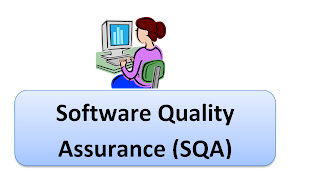Software Quality Assurance in software engineering

On this blog you can post about most of the engineering related topics in very simple language. It computer science programs or management systems. Can read and understand in very easy language. Here you can know the code of different types of programs. You can learn about different computer languages. And you will also get information related to the operating system here. All you have to do is one click and your questions will be answered immediately. All about learning and knowledge provide...

It is the measures of the degree of interdependence between modules a good software will have low coupling.
If the dependency between the modules is based on the fact that they communicate by passing only data. Than the modules are said to be data coupled. In this coupling the components are interdependence to each other through data,
In this coupling the complete data structure is passed from one to another module. There fore it involves tramp data. It may be necessary due to efficiency factor this choice made by the inside full designer, not a lazy program.
If the modules communicate by passing control information than they are said to be control couple. It can be bed if parameter indicates completely, Different behavior & good. If parameter allows factoring & reuse of functionality.
In this the modules depends on other modules external to the software being developed to a particular types of the hardware.
The modules have share data such as global data structure. The change in global data means tracking back to all modules. Which excess that data to evaluate the effect of the change so it has got disadvantages like- Difficult in reusing modules, Reduce ability to control data excess & reduce maintainability.
In this one modules can modified the data of another modules & control flow is past from one to other modules.
It is a measurement of the degree to which the element of the modules & functionality is related. It is the degree to which all the element directed towards programming a single task & content in the component. A good software design will have hogh cohesion.
Every essential element for a single computation is content in the component. A functional cohesion perform the task a function it is an ideal solution.
An element output some data becomes the input form all other element that is the data flow between the part. It occurs naturally in functional programming language.
To element operates on the same input data or contributes towards the same output data.
Comments
Post a Comment